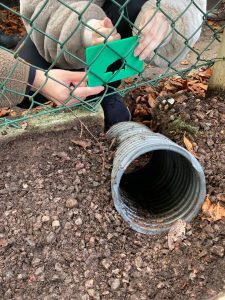Installing hog highways at the University
A conservation priority
This term, Bristol University Conservation Group (BUCG) has teamed up with Hedgehog Friendly Campus (HFC) to install hedgehog highways across campus, as part of their Highways for Hogs campaign. The number of hedgehogs in the UK has declined by a third since the turn of the millennium, making these spiny critters a conservation priority. There are an estimated 17 species of hedgehog across the globe, but the only species found in the UK is the West European Hedgehog, Erinaceus europaeus.
Helping all wildlife
In addition to being culturally significant, hedgehogs are an important indicator species, largely due to their diet of invertebrates. Where hedgehogs are common, invertebrates will also be, and such habitats are likely to be optimal for birds and other wildlife. Like much of our wildlife, hedgehogs in the UK face a plethora of threats. Certain characteristics of hedgehogs make them particularly vulnerable, including their hibernation over winter and the fact they have no flight reflex, and instead roll into a ball in the face of danger. Whilst their spines may provide effective protection against their traditional predators such as large birds and foxes, they are unfortunately no match against the garden strimmer and bonfires.
Connection through wildlife corridors
One of the main reasons hedgehogs are in decline in Britain is fragmentation of their habitat, as fences and walls are continuously becoming more secure. Connectivity of habitat is important in providing adequate range, as well as in maintaining genetic flow. The average hedgehog home range may be as high as 200m2, yet the average urban garden is only about 150m2. Moving between gardens is made even more difficult using gravel-board fences in modern developments. This poses a clear problem for hedgehog populations and is what the Highways for Hogs campaign is hoping to remedy across the Bristol University campus. Hedgehog highways provide pathways between hedgehog habitat, thus increasing connectivity. These can be made by installing tubing under fences, or even just cutting out a small hole in a fence. Recently, hard-working members of BUCG and HFC have braved the weather to install a number of these in the grounds of Goldney Hall, as can be seen in the photos below. We hope these gateways between habitat will help hedgehogs to travel between gardens, enabling greater success in finding mates, food, and shelter.

You can help too
Why not build your own hedgehog highway in your garden, or offer to install a hedgehog highway in a neighbouring garden? A 13 cm by 13 cm gap is large enough for a hedgehog to fit through, but too small for most pets to fit through. You can create a hedgehog highway by cutting a gap in the bottom of a fence, removing a brick from the bottom of a wall, or installing tubing or digging a trench under a fence. You can order a hedgehog highway sign from hedgehogstreet.org to make sure no well-meaning neighbours block the hole. You can find out where there are hedgehog highways in your area, and map your own on the Big Hedgehog Map.

More information
Follow @bristolhedgehogs on Instagram
Join the HFC Bristol Facebook group to keep up to date and get involved!
